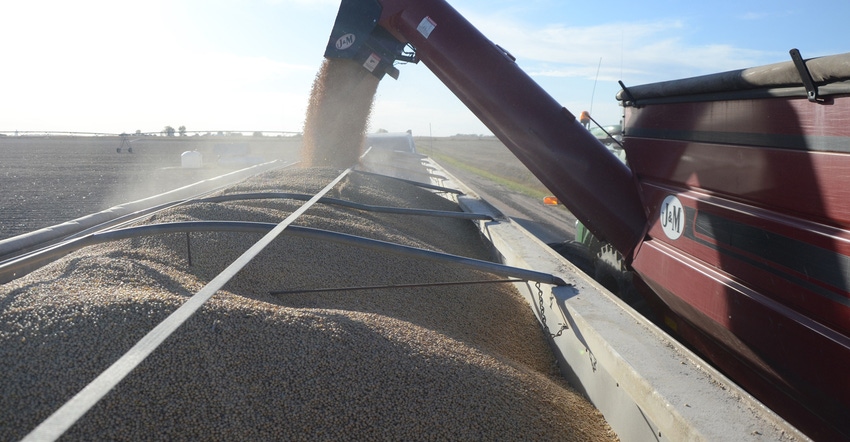May 20, 2019

By Robert Tigner, Jessica Groskopf and Cory Walters
Because of large global ending stocks of corn and soybeans, news of flood damage has not affected the futures price of these commodities as one might have expected. This is a challenge for farmers facing flood damage, as their revenue will be affected by both lower-than-usual yields and possibly lower prices, and costs incurred because of flooding.
How do you write and implement a preharvest grain marketing plan that considers greater yield uncertainty because of flood damage?
Farmers affected by 2019's early spring flooding are likely to have increased yield risk from changed soil characteristics, excess moisture or late planting. The following are steps for planning 2019 grain sales:
1. Assess anticipated production. Depending on the extent of the damage and the size of the farm, there will likely be four categories of yield variation:
Category 1: Likely normal production. Use actual production history as a yield estimate.
Category 2: Damaged but likely to be planted on time. Production may be slightly reduced from APH.
Category 3: Damaged, late planted. Production will occur, but too many variables are present to estimate production.
Category 4: Damaged, prevented planting. No production or crop planting after the insurance period.
Once you have categorized the damage, estimate the total production in each category.
2. Determine the marketing percentage. The most difficult decision for flooded farmers will be the percentage of estimated production that you are going to market. Contracting more grain than you produce can result in lower revenue if you must pay a "buyback" fee to the elevator or buy bushels from a neighbor to fulfill your contracts.
Remember, you do not have to sell any grain before harvest. However, corn and soybean prices are traditionally higher during the growing season than at harvest. You may want to adjust your marketing percentage throughout the year as you see how your crop progresses.
Keep basis in mind. Elevators in areas affected by the flood may offer a larger-than-normal basis to incentivize shipments of grain from a further distance. Use this to your advantage by contracting basis if the offered harvest basis is higher than the expected harvest basis. Your basis marketing percentage will be held back by expected production.
3. Determine the marketing contract. There are several types of contracts you can use to sell grain, some of which require delivery of grain and others that do not. If you are less confident in your yield estimate, you may want to use options and futures hedging that provide price protection, but do not require physical delivery of the commodity.
If you are comfortable with guaranteeing delivery, you can use a forward pricing contract, hedge to arrive, minimum price contract or basis contract. These contracts often are available through your local elevator.
4. Set price targets. Given greater yield uncertainty, it's important for your preharvest marketing plan to set realistic price targets. If you set your price targets too high, you may miss opportunities to price grain at its seasonal high. The April USDA World Agriculture Supply and Demand Estimates predicts cash corn prices to be $3.40 to $3.70 per bushel and cash soybean prices to be $8.35 to $8.85 per bushel.
5. Set sales deadlines. The December corn contract and the November soybean contract have slowly been trending lower since Jan. 1. If your early 2019 price targets have not triggered sales, you will want to set a secondary trigger in the form of deadlines to ensure some grain is sold during the growing season when prices are traditionally higher.
Tigner is an agricultural systems economist educator, Groskopf is an Extension educator for agricultural economics, and Walters is an Extension grain economist.
Source: UNL CropWatch, which is solely responsible for the information provided and is wholly owned by the source. Informa Business Media and all its subsidiaries are not responsible for any of the content contained in this information asset.
You May Also Like




